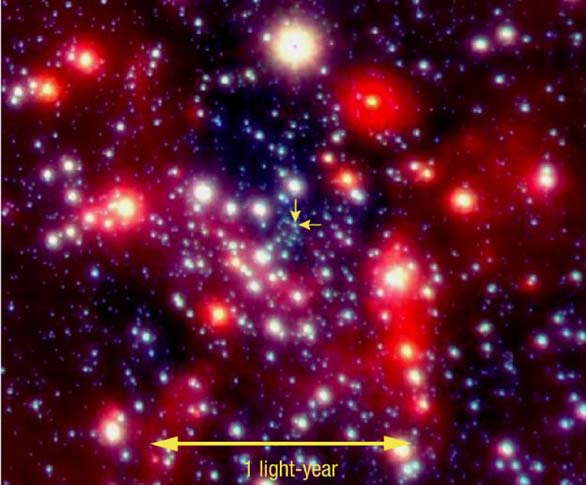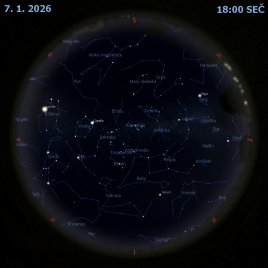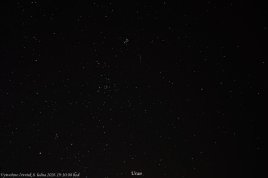Ve středu Mléčné dráhy

Uznání: Rainer Schödel (MPE) et al., NACO, ESO
Ve středu naší Galaxie Mléčná dráha se nachází černá díra o hmotnosti více jak 2 milióny Sluncí. Tento ohromující závěr, kdysi jen kontraverzní tvrzení, je nyní zdánlivě nevyhnutelný a zakládá se na pozorováních hvězd, které obíhají velice blízko galaktického středu. Astronomové trpělivě sledovali dráhu jisté hvězdy označené S2, když se přiblížila na vzdálenost asi 17 světelných hodin od středu Mléčné dráhy (17 světelných hodin je pouze asi trojnásobek poloměru dráhy Pluta) a to za pomoci jednoho z velmi velkých dalekohledů observatoře Paranal a důmyslné infračervené kamery NACO. Jejich výsledky přesvědčivě ukazují, že se S2 pohybuje pod vlivem enormní gravitace neviděného objektu, který musí být extrémně kompaktní - superhmotné černé díry. Tento hloubkový snímek v blízkém infračerveném světle z NACO ukazuje v Mléčné dráze přeplněné vnitřní 2 světelné roky s přesnou polohou galaktického středu označeného šipkou. Vzhledem ke schopnosti NACO sledovat hvězdy tak blízko galaktického středu lze přesně měřit hmotnost černé díry a možná dokonce provést i bezprecedentní test Einsteinovy teorie gravitace, jelikož astronomové pozorují oběžnou dráhu hvězdy kolem superhmotné černé díry.
NASA Official: Phillip Newman Specific rights apply. NASA Web Privacy Policy and Important Notices
A service of: ASD at NASA / GSFC & Michigan Tech. U.
Odkaz na originální APOD


